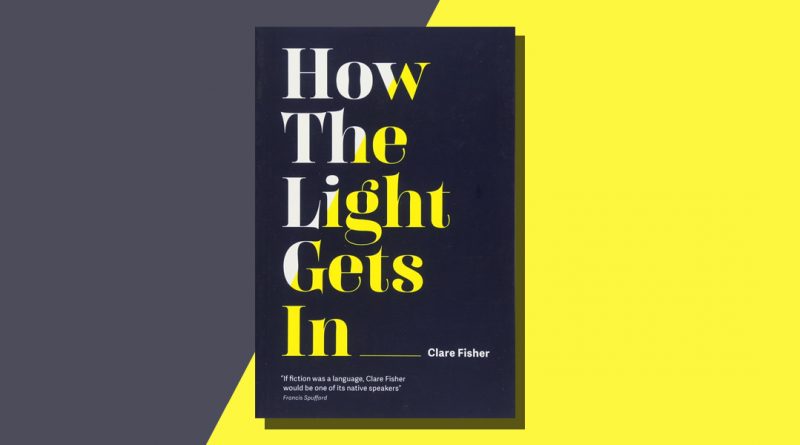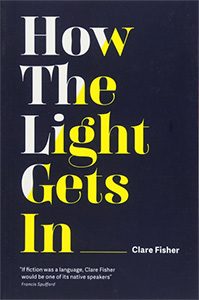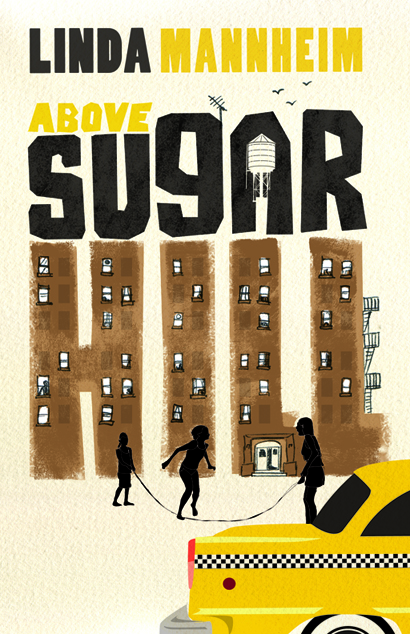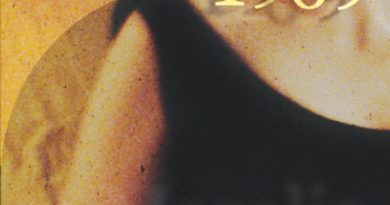How The Light Gets In by Clare Fisher
-Reviewed by Cath Barton-
In physical terms light brings energy, and darkness is the absence of light. So it makes sense that human beings crave light rather than darkness. Though, as Clare Fisher demonstrates in her collection of short fiction about aspects of contemporary life, it is not as simple as that.
Divided into five sections dealing with different dimensions of the light/dark continuum, and the cracks in it which help or hinder us, How The Light Gets In (Influx Press) shows the world to be an inhospitable place – at least in the cities of England – in which the risk of confusion is ever-present.
The opening story, ‘In Praise of Cracks‘, explores the child’s hunger for prizes at school; the hunger is encouraged by her mother but is never satisfied. Dissatisfaction recurs throughout the collection – in the pointlessness of the selfie in ‘This City Knows You Better Than You Think‘, in the difficult quest ‘to really be here and not just exist’ in ‘Trying‘, and in the surreal account of Richard III dealing with contemporary frustrations in ‘Twenty-First Century Celebrity‘.
The humour in this little story of the king whose bones were dug up in a car park in Leicester is a welcome leaven in a collection which is for the most part an unremitting litany of sorrow and disappointment.
Fisher drills into the alienation of city life. Many of us, watching the back of houses on a train journey through suburbia, will have had a similar experience to the person in ‘Never Mind the Gap‘, who is:
“struck by how strange and ordinary it is that you’re whizzing past life after pebble-dashed life; how each is as sprawling and unique and unknowable as your own, and yet, every house is encased in the same slim layer of frost.”
The light we all seek involves relationships with others, and Fisher skilfully highlights the many ways in which we can fail at this, from our attachment to the blame game in ‘Not Quite Enough‘ to the impossibility of having a meaningful conversation about what happened in the past on an intermittent Skype connection in ‘Blip Blip Blip‘. The inadequacies and delusions of our reliance on technology feature strongly in these stories – ‘Things smartphones make you less likely to do when in a private place, with or without other people‘ itemises some of them, including:
“See awkward/boring conversations through to their bitter ends because you cannot pretend there is something more important happening on the palm-sized piece of plastic which you angle, carefully, away from the awkward/boring person’s line of sight.”
We may laugh when we read this, but it is hollow and short-lived laughter because this really is so! Fisher piles on examples of the ways in which computers and smartphones get in the way of real communication, the light which they emit an illusion.
The story ‘Midday in My Mind’ sums it all up in the narrator’s final observation that life would be easier for her and her partner if she was to turn into his phone, given how much of his attention is focused there.
In the dehumanising streets and ‘Dark Places to Watch Out For‘ in our cities there are nonetheless examples of genuine human kindness. In perhaps the most poignant story in the collection, ‘The Guardian of Travellers‘, a worker in the information centre at London’s Victoria Coach Station does his best to bring a little light into the lives of people who approach him for help. His sadness though, is for those who don’t ask, because they are beyond help, ‘folded into some corner, limbs tight as origami.’
And when light seeps out of people’s lives, what then? The section of the collection entitled ‘How The Light Gets Out‘ is especially dark. In ‘Repeat‘, a girl in compelled to repeatedly recount the story a violent attack, because she is as tangled as the face of her attacker, distanced from her feelings. In ‘Happy, Sad, Numb‘, children who are homeless and hungry are equally alienated, feelings for them just blank faces on cushions in the children’s corner of a shelter. This is a bleak, searing story, as is ‘The Other Lady of the Night‘, though the girl who has been given false promises about life in England does not give up hope, walking over grass and ‘many cow shits’ towards a distant square of light.
Fisher’s nuanced and well-crafted collection of snapshots of the way we live now is, in the end, hopeful in spite of all the bleakness she describes – people come back from what is described in ‘Unnecessary Attachments‘ as ‘that dark, murky place where it’s all too easy to mistake humans for sharks’, while in ‘Why I’m Not Scared‘, a girl finds colours in the deepest darkness. Most tellingly, in ‘The Engine‘: ‘once or twice a month perhaps, we fizz with wonder,’ and the not knowing when this might happen again drives us on, in spite of the heaviness of many of our days, towards the energy of the light.
*
—
- View the twelve titles on the Edge Hill Short Story Prize 2019 Longlist (announced 30 May 2019)
Sabotage Reviews will be taking a look at a number of the indie-published titles on the longlist, including Leila Aboulela’s Elsewhere, Home (Telegram/SAQI), Michael Conley’s Flare and Falter (Splice), Wendy Erskine’s Sweet Home (Stinging Fly), Rosemary Jenkinson’s Catholic Boy (Doire Press), and Vicky Grut’s Live Show, Drink Included (Holland Park Press).
- View the six titles on the Edge Hill Short Story Prize 2019 Shortlist (announced 9 August 2019)
The winner of the Edge Hill Short Story Prize for best single author collection will be announced on 25 October 2019.
—
Find out more about How The Light Gets In on the Influx Press website.

Reviewed by Cath Barton — Cath Barton’s prize-winning novella The Plankton Collector (2018) is published by New Welsh Rarebyte and her second novella, In the Sweep of the Bay (2020), by Louise Walter Books. Cath is also active in the on-line flash fiction community.
Photo © Toril Brancher
Twitter: @CathBarton1 | Website: cathbarton.com






